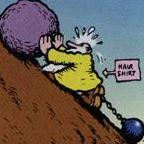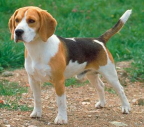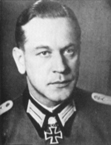DEB
Posts: 687
Joined: 1/29/2005
From: Bristol , England
Status: offline

|
quote:
ORIGINAL: mdiehl
The other noteworthy aspect is that the J1Ns weren't radar directed, they were searchlight directed. They weren't true night fighters in these instances. They were day fighters operating in one of the few environments where the Japanese could provide enough supporting logistics to give them a small chance of success when operating at night. The UK was, of course, doing this sort of thing in 1940.
Interesting. Of course you fail to admit that the radar in this A/C was so poor it needed searchlights to assist! See below:-
http://www.usaaf.net/ww2/night/nightpg9.htm
Equipped with SCR-540 airborne radar (equivalent to the British Mark IV) and lacking superchargers, these first U.S. night fighters performed poorly. Most Japanese bombers flew above twenty thousand feet, while P-70s struggled to reach that altitude and operated best under ten thousand feet. Initially, the Americans lacked ground control radar, relying only on vague reports of penetrating aircraft from coastwatchers. Crews had to develop the techniques of ground controllers and antiaircraft 33 artillery coordination in combat. Against these obstacles, Pilot Capt. Earl C. Bennett and R/O TSgt. Raymond P. Mooney of Detachment B on Guadalcanal claimed the first U.S. radar-directed (using the SCR-540, Mark IV airborne radar) night kill on April 19, 1943, though searchlights illuminated the enemy aircraft until radar contact had been made. Pilot 1st Lt. Burnell W. Adams and R/O Flight Officer Paul DiLabbio claimed the only kill for Detachment A at New Guinea in May. Although three squadrons eventually flew P-70s in the Pacific theater, they claimed only two victims.
To make up for the technical shortcomings of the P-70, the 6th NFS acquired a few P-38 day fighters with the speed and altitude to intercept enemy aircraft. Loitering at thirty thousand feet over Guadalcanal, the P-38s had to wait for ground-based searchlights to illuminate enemy bombers. This reliance on searchlights limited them to one night kill in May 1943. Later attempts to free the P-38s from this dependence by equipping them with Navy AN/APS-4 airborne radars ultimately failed because of the excessive workload imposed on the lone pilot.
This website also advises:-
The Japanese army and navy air forces dominated the day skies in 1941 and 1942, however, and had the ( ? sic. no ? ) need to seek the night’s protection. Only when the United States seized daylight air superiority after January 1943 did Japanese night missions become the rule.
And :-
The initial experience of the United States with night fighters in the Pacific was not stellar. On March 20/21, 1943, Detachment B’s P-70s failed to stop Japanese night bombers from damaging fifteen of the 307th Bomb Group’s B-24s and five of the 5th Bomb Group’s B-17s on the ground at Guadalcanal. Eight months later, in November, enemy night bombers sank one and damaged three Allied ships at Bougainville. The AAF concluded from this initial experiment in night fighting that “it proved impossible to prevent the Japanese from inflicting some damage” on U.S. ground and surface forces.
See also:-
http://www.aviastar.org/air/japan/nakajima_j1n.php
the J1N1-S, entered production in August 1943 and continued until December 1944, during which period a total of 420 J1Ns were produced, the great majority of them J1N1-S night-fighters. These differed from the earlier reconnaissance version in having the crew reduced from three to two, the observer's cockpit being eliminated and faired over; all aircraft retained the upward-firing cannon, but the downward firing guns (found difficult to aim and seldom used) were omitted from later aircraft, while a third upper gun and a forward-firing 20mm cannon was fitted in the J1N1-Sa. Rudimentary centimetric AI radar was installed in the nose and some airciaft also carried a small nose searchlight. In service with the 251st, 302nd and 322nd Kokutais, the J1N1-S night-fighters proved fairly effective against the B-24, which was not in any case well-suited to night operations...
So they did use radar, just not in our period!
|
 Printable Version
Printable Version













 New Messages
New Messages No New Messages
No New Messages Hot Topic w/ New Messages
Hot Topic w/ New Messages Hot Topic w/o New Messages
Hot Topic w/o New Messages Locked w/ New Messages
Locked w/ New Messages Locked w/o New Messages
Locked w/o New Messages Post New Thread
Post New Thread